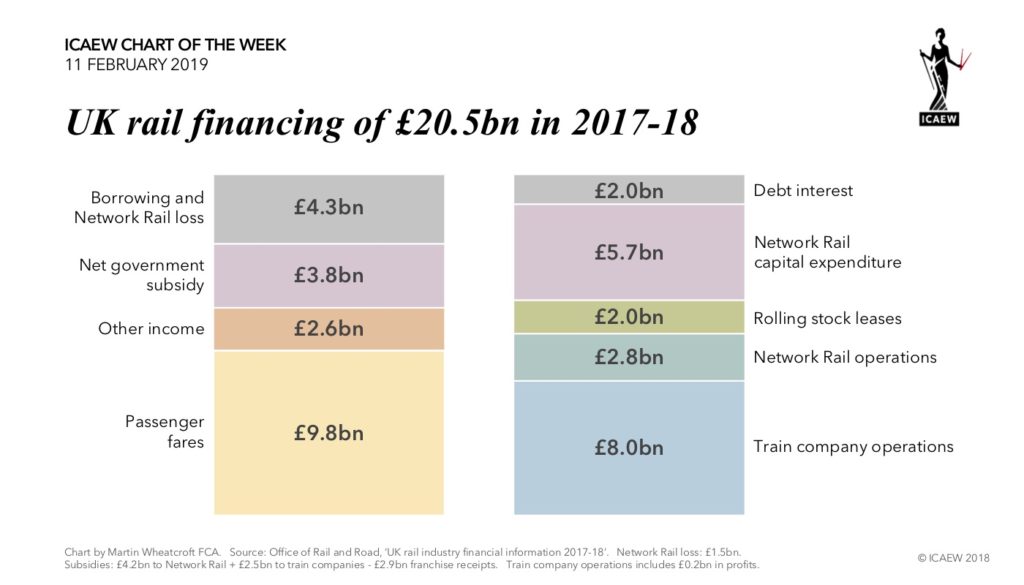
This week’s #ICAEWchartoftheweek is on the UK rail industry’s finances for 2018-18, the subject of a recent report by the Office of Rail and Road.
Although the ORR tries to explain the way money flows through the industry (see below), with payments to and from the different players, we thought we would try and provide a high level overview that summarises the £20.5bn needed in total by the railways last year.
Broadly the train operating companies and Network Rail together generated £12.4bn in revenue, of which £9.8bn came from passenger fares. This is 60% of the total, with taxpayers contributing the balance of £8.1bn (40%) in the form of subsidies, public borrowing and losses by the state-owned Network Rail.
This was used to fund £10.8bn in train company and Network Rail operational costs, £7.7bn in Network Rail capital expenditure and rolling stock leases, and £2.0bn in Network Rail debt interest. (This does not include the £1bn or so incurred in 2017-18 by the Department for Transport on the new HS2 line between London and Birmingham.)
With fares continuing to rise ahead of inflation, high levels of passenger dissatisfaction, and precarious finances, the railways are likely to continue to depend on government support for the foreseeable future.
